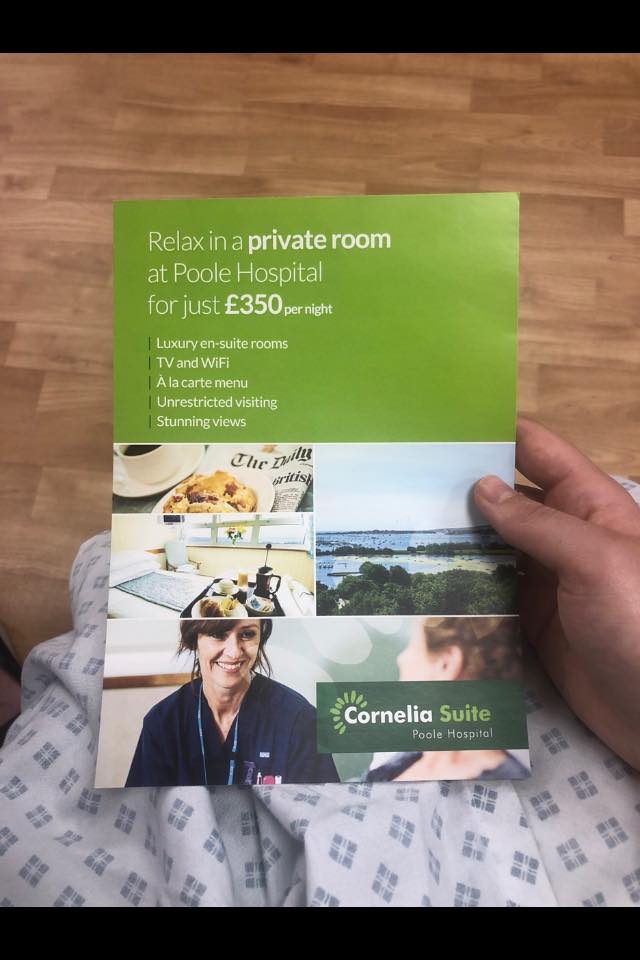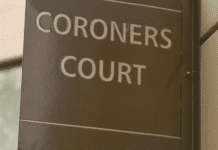Following our meeting with Dorset Clinical Commissioning Group, the Hospital Trusts and SWAST on 17th February, please see below the outstanding questions that we have sent to the CCG.
1 – A&E Local
A) We understand that the ‘A&E Local’ model is still in development, and that the CCG/Trust is open to considering this model once it becomes clearer. Many of the issues following would be addressed by the maintenance of daytime A&E care at Poole. There is a better revenue funding offer in the NHS long term plan, and the Trust is staffing two 24/7 A&Es currently. We would therefore like to continue to consider how to plan to enable the retention of the A&E Local option going forward. There is precedent for ‘part time’ emergency provision in the daylight weekday cardiology service at DCH.
2-Community services
A) Is there a plan with milestones for expanding these services? In 2017 DCCG reported 670 new staff would be needed for the services, and that they had a current community staff vacancy rate of 14%. Tim Goodson reported in the meeting that 100 new community staff have been recruited, however we had calculated that the 14% vacancy rate meant we were 230 staff short on current establishment, in addition to the 670 new staff needed. If this is the case, we are still 800 staff short of the target, once the 100 new staff is taken into account. Could an update on community staffing please be given?
B) The CCG is not responsible for housing supply in Dorset and separately we are campaigning on issues such as affordable housing and reducing the number of second homes so that the homes we have are more affordable for key workers
3-Community Hospitals
A) We talked after the end of the meeting about delayed transfers and how this affects hospital capacity. Community hospital beds are one part of the solution to earlier transfers (as well as care packages at home).
We understand there will be beds in the ‘community hubs’ at Poole and RBH, however we understand that these are to ‘replace’ the community hospital beds that are due to close across Dorset. We had 13 community hospitals with beds. According to the DCCG Decision Making Business Case, 136 community beds would close at Ferndown, Wareham, Portland, Alderney (48 physical healthcare beds) and Westhaven, although the figure of 136 does not include the 20 beds that have been closed in Bridport Community Hospital. What does the loss of these beds mean for end of life care in one’s own community? We are now told Dorset will get ’12 new community hospitals’. Does this mean there will be no more Community Hospital bed closures, and there will again be bed provision in Ferndown, Wareham, Portland and Bridport?
B) The widespread view is that the elderly lose independence rapidly in hospital and large hospitals must be even more bewildering. Even at this stage would it not be better to plan on more local community bed provision rather than large units at Poole and RBH?
4-Capacity
A) We have had an extensive exchange of views since September 2017 about whether there will be enough beds. National views on the advisability of bed closures have changed. Maintaining and increasing beds is now seen as a priority.
B) DCH beds: I understand that the bed provision will remain if there is a demand, and we understand separately that DCH needs more beds. While the possible provision of further Government investment to increase A&E facilities at DCH is welcome, we also understand that this funding is not definite, and may not be available for at least five years. If Purbeck A&E patients are to be go to DCH as has been suggested, could you clarify what will be done to support DCH A&E to be ready to cope if there is no A&E capability at Poole?
C) RBH/Poole beds: As I asked after the meeting, how does a single emergency hospital, without the “safety valve” of planned places, cope with flu or other epidemics, especially if the space at Poole has been remodelled out of use? Leaving aside DCH, the extra acute beds planned for RBH to bring it up to 977 beds (+236) are fewer than the acute beds lost by planning to bring Poole down to 247 acute beds (-407). You indicated that RBH could be expanded over a 1000 beds – but have the planners indicated a finite limit?
D) Patients: How many patients does the single A&E at RBH expect to cater for? We believe this will be the conurbation catchment population + West Hampshire, + all housing developments planned in that geographical area. Has consideration been given to the increase in health need due to a growing and ageing population? The Hidden Dorset report suggests 30% of the population will be over 65 by 2030.
E) Staff: We had hoped to better understand the acute staff mapping as Lee said it was staffing availability which is a key factor in the one or two A and E decision Can you help: what A and E staff are there now in Poole and RBH, and what staff are planned for each UTC/A and E (RBH/PGH) after the reconfiguration, by skill set/grading or a breakdown which is meaningful.
5-Clinical risk assessment
A) What can we do together to produce an agreed assessment?
We can agree that for some admissions the new plans do not pose a greater risk than present and some will benefit.
However there will be some emergency admissions where the longer travelling time may cause harm or worse. Those of us who may live in the affected areas do not sign up to being collateral damage!
B) We did extensive research of the literature and the Nichol study (2007) showed that for each additional 10km of travel there was a 1% increase in mortality. We asked for the clinical research evidence that supports
centralisation in Dorset, and we understand that there is a list of papers?
C) Based on the SWAST report a small percentage ‘at potential risk’ was identified, yet this still seemed to represent some hundreds of admissions.
We know you did work to try and bottom this out by looking at individual cases identified by SWAST, but there were issues with the focus of the study, the methodology used, exclusions, the sample size, the accuracy of the data used to select patients, and, sadly, several of the small sample had died anyway.
Without the pressure of time, there is an opportunity to understand better the potential impact of the changes on time critical patients who would face longer journeys, and those who would face the longest, journeys under the plans.
D) We understand that the SWAST report assessment of the plans was deemed ‘not fit for purpose’ as a clinical risk assessment by Dr Ian Mew, who reported back on behalf of the panel of Clinicians selected by the CCG in August 2017. This was in part due to the exclusion of non-ambulance emergencies from the risk assessment, and the exclusion of the ambulance patients with the longest journeys.
The vast majority of maternity and paediatric emergencies do not arrive by ambulance. Dorset CCG found in their Equality Impact Assessment that longer journey time posed ‘a significant risk’ to these groups. As far as we are aware no further clinical risk assessment has been carried out.
6) What can be treated in the proposed UTC?
A) The only definition we have of a UTC was provided by DCCG during the consultation, and lists the same conditions that DHUFT say can be treated in a Minor Injuries Unit, with the addition of simple breaks of long bones. The Trust seemed to be saying on Monday that the proposed Poole UTC would treat a bigger range of conditions – could you please provide an updated list?
B) With the change from A&E to a UTC, the obvious risk is that either patients do not understand the change and “A&E” cases continue to arrive without using an ambulance causing delay to treatment or people flock to RBH as it will have all the skills. Is there an example elsewhere in England where this change has been made?
C) The numbers that can be treated in the proposed UTC
Please provide source evidence to clarify the calculation that 60,000 of Poole’s current A&E attenders could be seen in the proposed Poole UTC. Please could you also explain the calculation in relation to the 72,000 Poole A&E attenders in 2018/19 (source Poole 2019 annual report) and the 38,600 emergency admissions?
6) The Ambulance Service
A) The Ambulance Service needs to expand in order to meet current targets. The SWAST report showed extra ambulance hours needed to service the loss of Poole A&E. Where small A&Es have been closed around the country the demand on the Ambulance Service has increased substantially.
B) Our initial thinking is that longer journeys to access care in an emergency would require some mitigation in terms of increased ambulance availability for the more remote locations to prevent deaths. You were able to tell Dorset HSC that we had been allocated additional resources, and this was reiterated in the meeting on Monday. Is this to help with the general underperformance, or will there be some geographical emphasis in deployment?
C) There is currently talk in Swanage that we will be losing our Ambulance car imminently, and that the ambulance base is to likely be closed in the not very distant future. Can we clarify what is happening please?
7) Health inequalities
A) In areas of greatest deprivation large percentages of the population do not have cars and for most of the County we have one of the worst bus services in the UK.
B) Portland and Weymouth have 8 of the most deprived wards in Dorset and as Giovanna Lewis said the loss of the Portland community beds has been keenly felt. Portland does have good bus services to Dorchester but a journey on public transport to RBH is daunting for visitors, and RBH is a long way to go for those needing to access emergency care there.
C) These plans move emergency maternity care further away from the majority of the population – locating NICU at the edge of the County renders services all but inaccessible. What will be done to support access given the unavailability of ambulances and the fact most mums facing maternity emergency will be facing long journeys in pain in cars? And how will visitors in remote locations be supported to access relatives at RBH?
8) The impact on the number of journeys across the conurbation
A) Poole had 38,600 emergency admissions in 2018/19, while RBH had 74,600 elective admissions, and hundreds of thousands of outpatient appointments. Beds at RBH are planned to increase to 977, while there will only be 247 acute beds remaining at Poole.
Under the plans, we understand that Poole would see all elective operations and outpatients for the conurbation catchment and W Hampshire, while RBH would see all emergency, and all cancer, maternity, and paediatric, admissions for the same area, plus all maternity emergency and NICU admissions across Dorset. Would it be possible please to provide numerical data that explains and quantifies these journeys across the conurbation, before and after the changes?
Debby Monkhouse












